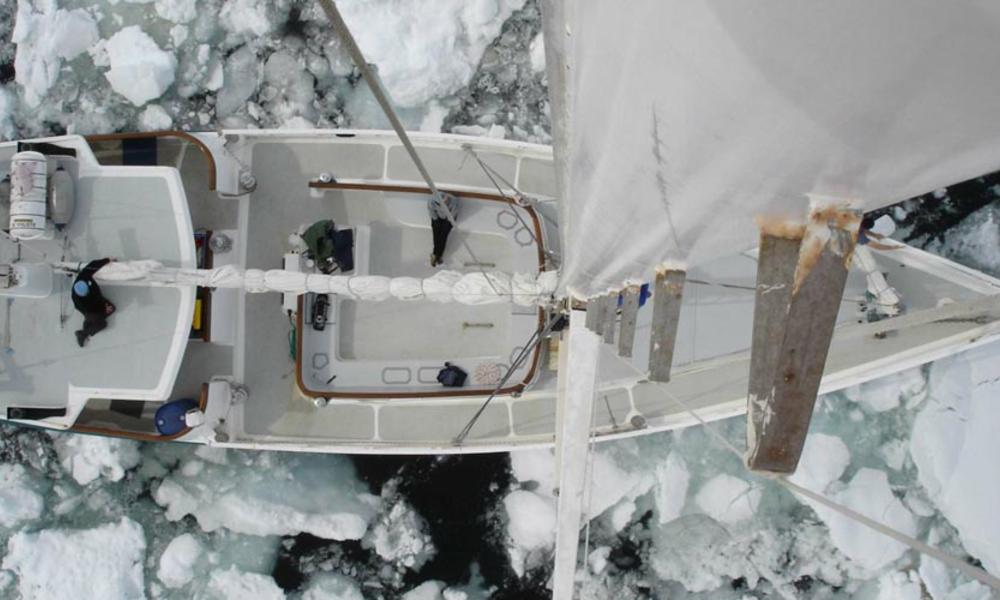Instead of just following the crowd, these adventures take you to the top of snow-capped mountains, along the shores of winding rivers and practically to the ends of the Earth. Of course adventure isn’t just about moving your physical body, with WWF & Nat Hab adventure also expands your mental capacity–for wonder and learning.
Natural Habitat Adventures (NHA) and WWF together embrace this philosophy through our active expeditions. Here are five reasons to choose one for your next nature adventure:
1. Immersion in Conservation Plights Worldwide

The Tambopata River is one of the longest and most-travelled rivers in Peru. Here, it cuts through Tambopata National Reserve, a protected area of dense mature forests, lakes, swamps and savannahs that can only be accessed by water. © Days Edge Productions/WWF-US
When you visit pristine landscapes, intact ecosystem, national parks or eat endemic foods of some exotic locale, there is often a lot more behind the image, person or country. To help conserve lands and wildlife for future generations, there is often a lot of work that must done behind-the-scenes.
Peru is one such magnificent location. Our trips allows you to gain access to unique, remote spots—and you travel with expedition leaders who respect locals and their remarkable resolve to protect their natural resources.
Recommended trip: Wild Peru: A WWF Conservation Journey
Why This Expedition: Any tourist can visit Peru. But this conservation-focused expedition whisks you though three radically different biomes. This trip highlights Peru’s stunning coastal deserts, plunging canyons and the dense Amazonian rain forest. Along the way you will learn about WWF’s tireless conservation work supporting sustainable fisheries, indigenous peoples and good forestry management in the Madre de Dios region with a WWF expert and local conservationists.
When to Go: NHA & WWF are only offering one departure in August 2016.
2. Unparalleled Wildlife Viewing Off the Beaten Path

Simian jackal or Ethiopian Wolf, Canis simensis. Portrait. Critically endangered. Adults greet and interact in the early morning. Bale Mountains national Park, Ethiopia © Martin Harvey/WWF-Canon
When people think of travel to Africa, they often think of a safari in Kenya or Tanzania. Most don’t think of Ethiopia as a wildlife hotspot. But it’s unusual geography and climate harbor endemic species such as the walia ibex, Ethiopian wolf and gelada baboons.
Recommended trip: Wild Ethiopia: The Roof of Africa
Why This Expedition: Most trips to Ethiopia focus heavily on its cultural history, while this trip does touch on it, wildlife steals the show as you visit three national parks including Simien Mountains, Bale Mountains and Abidjatta-Shalla National Park. You’ll visit diverse landscapes such as Sanetti Plateau which harbors the largest, though decreasing, population of the endangered Ethiopian wolf.
When to Go: October & November during the dry season (though it should still be green from the August rains)
3. Extreme Adventure
Expeditions provide an intimate nature experience and let you reach your physical best. Be it on the sea or at high altitudes, an active expedition requires travelers to be more fit, adventurous and flexible than most other trips.
Recommended trip: Sailing Antarctica: The Ultimate Polar Nature Expedition
Why This Expedition: Most voyagers to Antarctica go on large vessels, but we offer an alternative: the opportunity to sail aboard a sailboat with an ice-strengthened hull. This expedition requires physical and psychological stamina. Passengers on this expedition work together as a crew; everyone lends a helping hand. The cold wind of the high seas can make for a challenging trip, especially when crossing the Drake Passage. Yet it’s a challenge well worth it once you realize what you have accomplished.
When To Go: January, during the Southern Hemisphere’s summer when there is less ice
4. Close-Up Encounters
Active adventures bring a different point of view even in well-traveled areas. Imagine seeing a group of tourists hopping out of a van at a scenic mountain overlook while you’re actually hiking the trails that run beside it. Not only do you get that mountain-level perspective, but you also get to spend more time enjoying it.
Recommended trip: Galapagos Hiking & Kayaking Adventure
Why This Expedition: The Ecuadorian islands are home to many endemic species: Galapagos penguins, marine iguanas and giant tortoises. NHA is one of the few travel companies in the world in possession of kayaking permits for the Galapagos. Exploring via kayak brings you up close to the wildlife and to seldom-explored areas, allowing you to see wildlife that can be found nowhere else in a way few others can.
When To Go: Any time of year is perfect in the Galapagos.
5. Complete Isolation
Many beautiful places in the world are also some of the most visited. But there’s one place where there is truly no other soul except you and your fellow groups of travelers.

© Olaf Malver/NHA
Recommended trip: Natural Habitat’s Base Camp Greenland
Why This Expedition: A deluxe base camp on the edge of the Sermilik Fjord gives you the option to explore the more remote reaches of East Greenland that aren’t normally as easy to reach. As you hike among the Valley of Flowers near the small town of Tasiilaq, you’ll observe the mild summertime climate as arctic wildflowers pop into view. This adventure also provides ample opportunity to explore more desolate areas as you cruise through the open sea in search of whales, seals and massive icebergs. In the evening, lectures by WWF-trained naturalists, travelers learn even more about glaciology and conservation in Greenland.
When To Go: July – September, to experience Greenland’s mild summer climate



























